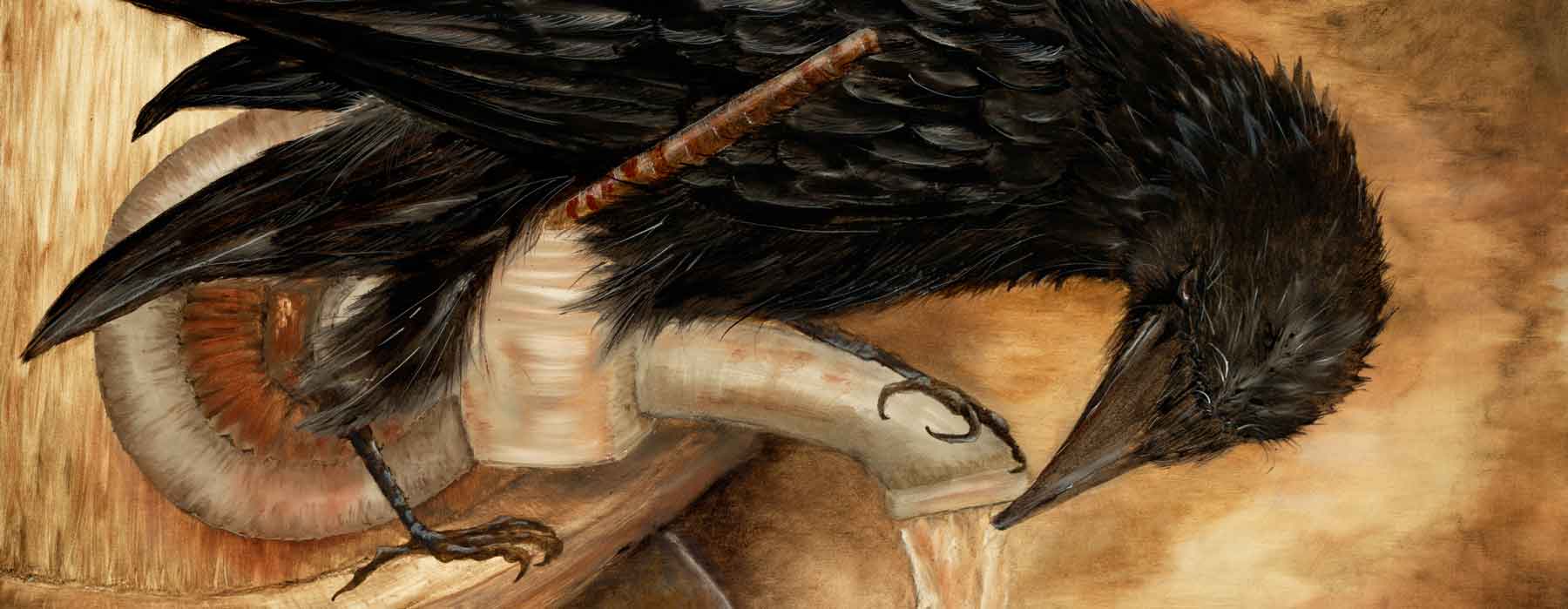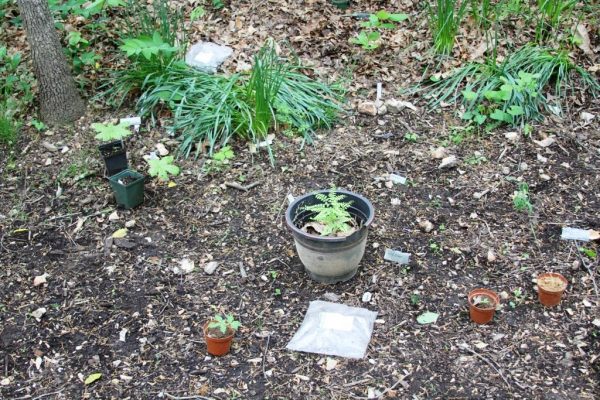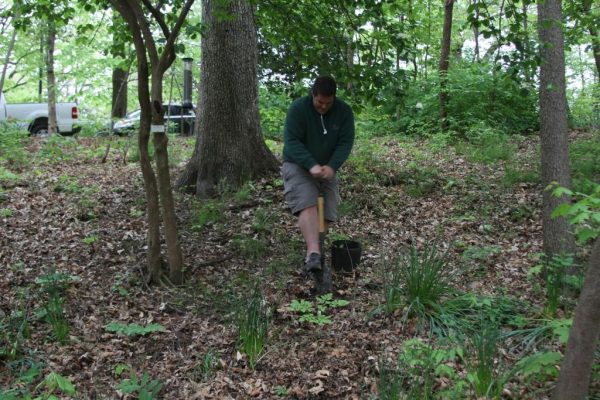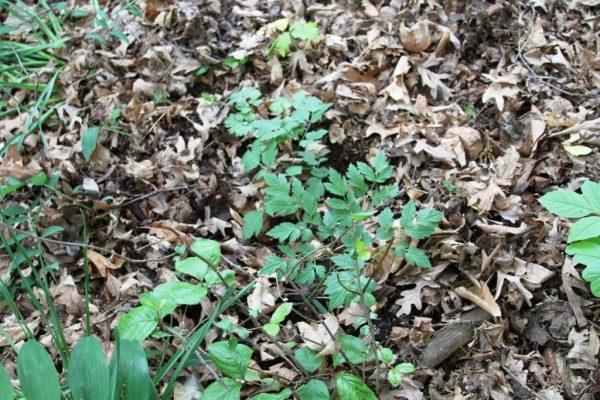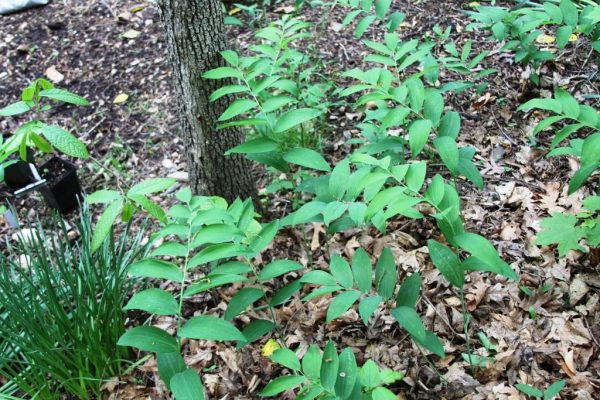 Wild Ozark is honored and excited to be embarking on a long-term project in conjunction with Compton Gardens in Bentonville, Arkansas. This American Ginseng Sanctuary project is made possible, in part, by a grant from the United Plant Savers.
Wild Ozark is honored and excited to be embarking on a long-term project in conjunction with Compton Gardens in Bentonville, Arkansas. This American Ginseng Sanctuary project is made possible, in part, by a grant from the United Plant Savers.
This is still under construction but you can see it anytime of the year. Ginseng will be visible only from late April through November, possibly early October.
You can email me at madison@wildozark.com if you have any questions about it.
Where is it:
Progress Updates
I’ll update this timeline each time we do work on the habitat and hyperlink it to the bottom of the page where more details and photos will be added. When I do that, I’ll revise the post date and it’ll cause this to show up as a new blog post each time.
Timeline
- 14 Oct 2016 – blog post by Anita Burke of The Sustainable Herbs Project, after she visited the sanctuary
- 21 Oct 2015 – planted seeds and interviewed Madison and Luke (KUAF for the Ozarks at Large program)
- 18 Sept 2015 – Transcript for talk at Compton Gardens
- July & August – while it is too hot to transplant, it’s a great time to write up handouts
- 02 June 2015 – putting in a few more plants, checking on earlier plantings
- 23 April 2015 – we planted a ginseng starter colony and some other companions
- 07 April 2015 – first groundbreaking at the garden (planted doll’s eyes, grape fern, goldenseal)
- 25 Feb 2015 – received email announcing grant awarded
- 16 Jan 2015 – emailed grant proposal to United Plant Savers
- 24 Nov 2014 – initial email to Corrin
Origin Story
It all started near the end of November 2014 with an introduction made by a mutual friend, Terry Stanfill. Once he put me in contact with Corrin Troutman, a grand plan began to take root. Corrin is the Director of Operations for the gardens. Luke Davis is the Site Manager. I emailed them my proposal – to install plants that make up a ginseng habitat in a suitable spot in their garden. My desire to do this stems from my own experiences in learning to identify ginseng and the proper type of forests where it likes to grow:
“When I first started learning to identify ginseng I went to the Ozark Folk Center in Mountain View. They had specimen plants and also some Virginia creeper so I could see them nearly side-by side while I examined the difference. I know this sort of information may encourage people who seek ginseng for the roots. But it also inspires a love and appreciation for the very unique habitat these plants need to grow. It encourages others who have proper habitat to restore ginseng to it, and those who do intend to harvest can do so with a sustainable frame of mind.” – from my letter to Corrin proposing the project.
The excitement began to build shortly thereafter. Once I knew Compton gardens were on board, I sent a proposal to the United Plant Savers. To my surprise and delight, Dr. Susan Leopold, Executive Director of UPS wrote back and admitted to being excited too!
Why So Excited?
I can tell you why *I’m* so excited by this project. It means an outdoor “classroom” in a public and protected place where I can “show and tell” about ginseng and the habitat. It means that others having a hard time figuring out the difference between ginseng and virginia creeper will have a place to go and see them both, with labels, in real life. It means that I’ll be able to combine my efforts with those of others to encourage stewardship and foster love of something basic to our American heritage – a plant that’s been at the heart of a tradition that spans centuries.

As with most natural resources, when there is a demand, the desire to provide a supply can cause a crisis. Digging by the traditionals isn’t the activity causing the concern. The traditionals have managed their plots for generations without depleting their supply.
Newcomers who may not understand the fragility of the ecosystem ginseng calls home, and those who aren’t considering the future or the impact of today’s behavior on tomorrow’s yield are only part of the challenges presented to the survival of this plant, but it’s a very large part.
Because it needs a specific environment to thrive, when the loss of even one tree can cause an imbalance, development and logging activity have a tremendous impact. And there are still yet other reasons ginseng’s status remains endangered. Rising deer and turkey populations are a threat. Deer nibble the tops and turkey eat the seeds (which destroys it).
Private landowners can offer sanctuary and refuge to this species and Wild Ozark hopes that through this Ginseng Sanctuary Project at Compton we can encourage stewardship of American Ginseng.
“Compton Gardens and Conference Center are named after Dr. Neil Compton, a noted Bentonville physician, writer, photographer, founder of the Ozark Society, and savior of the Buffalo River.” – from the Compton Garden website
It is because of the spirit of this man I’ve never met that Compton Gardens were my first thought when considering where to embark upon this project. The Buffalo River valley offers many natural sanctuaries for ginseng. It seemed only fitting to re-create a sanctuary habitat in the place that once was the home of the man who rescued that river from man-made demise.
07 April 2015
We planted a few things finally! The weather has caused a bit of delay – winter wouldn’t go away and then spring brought copious rain. It was a small start, but I’ll go back in a week or so to bring some of the ginseng and some of the other plants on our wish-list. Today’s new sanctuary residents include grape fern, doll’s eyes, and goldenseal.



We were almost color-coordinated that day!
23 April 2015
I brought a starter colony of ginseng consisting of three plants. A seedling, a two-year old, and a three-year-old plant with the beginning of a flower bud. If the oldest one successfully sets fruits this year, then it will have begun establishing a “real” colony here at the gardens. When these fruit fall, they’ll sit under the leaf litter all winter and the berry will decompose, leaving behind the seeds. The seeds will wait until the spring of 2017 to sprout because it needs a full cycle of cold-warm-cold before it receives the cues to begin growing. In the meantime the plant that made the berries this year will again make berries next year and set up the next succession.
So we have the three plants this year. Hopefully we’ll still have the three plants next year, with at least three more waiting to join them. In 2017 we should have at least three new seedlings. The original seedling we planted today should be making berries in 2017, the two year old will be four and making berries and the original three-year old will be five and also making berries. From the three plants installed today, within a few years we should easily be able to see how a sustainable colony can be maintained. That’s assuming they all survive.
Luke had some plants to add, too. In addition to the three ginseng plants, we also planted Maidenhair Fern, Dutchman’s Breeches, Goldenseal, Black Cohosh, Wild Ginger, and Bloodroot.
The area we’re working with is approximately 500 square feet, with room to expand as this first colony fills out.
Here’s some pics from today:
02 June 2015
Copious rain and family duties kept me away from the garden for the entire month of May. When I went back in June to bring a few more plants, all but one of the previously little transplanted ginseng plants had died back. Hopefully the roots are still there and just dormant and will return again in spring.
In the meantime, Luke said he’d planted some more companions. A backdrop of black cohosh will hopefully grace the habitat with tall spires of white flowers next year. The cohosh is performing well in other areas of the garden, so it should do just as well here in our little sanctuary spot.
A new person is on our sanctuary team now, Bennett Whitley. Bennett is working on his thesis and plans to include research on ginseng habitat in the paper. The guys installed the new plants while I worked on making a list of what we have in place already.
So far this is what we have:
- Maidenhair fern*
- Rattlesnake fern (pointer fern)
- Giant Solomon’s Seal
- Dutchman’s Breeches (very early spring flowering)
- Alum Root
- Witch Hazel
- Jack-in-the-Pulpit*
- Wild Ginger*
- American Spikenard*
- Green Dragon
- Wild Hydrangea
- Black Cohosh*
- Blue Cohosh (Imperiled in the state of AR)*
- Doll’s Eyes (Black Cohosh look-alike)*
- Pawpaw Tree*
- Redbud
- Black Haw
- Celandine Poppy
- Goldenseal *
- Bloodroot*
- Common violet
- Sugar Maple*
- Sessile Bellwort
- American Ginseng
* These are ginseng’s close companions, those plants that are very likely found in ginseng habitat.

02 June 2016
Bennett Whitley is the new Garden Manager, taking Luke’s place. That’s him on the right in the photo above. Luke has moved on to new grounds in Tennessee and we’ll miss him but have been left in good hands with Bennett. Congratulations Bennett!
We checked on the seeds we planted in fall but only one sprouted so far. I didn’t have my camera with me the day we visited, so won’t have a picture until later. My own seeds sown in fall didn’t sprout either but the ones from year before last finally sprouted so I’m confident that our patch at Compton will grow new seedlings next year.
The weather has been odd this year and that may have had an effect on our plants. Only one of the mature plants we’d transplanted to the site reappeared this spring, but it is a 3-prong with a flower stalk. This will hopefully become the “mother” for the habitat. She should have some babies springing up around her two years from now.
This fall we’ll transplant a few more mature plants to the habitat, install some signage and print some information to get ready for a better unfurling in April 2017. Ginseng is a long-term investment when it comes to growing or re-establishing habitat. It’s not surprising that it is taking more than a year to get our sanctuary filled out with plants, both ginseng and companions.
I’ll update again when we check to see if the berries are forming later this month. And I’ll be sure to bring the camera so we’ll have pictures to share!
